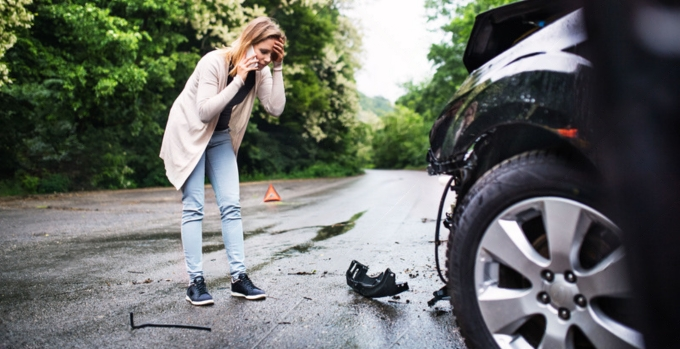call for a free consultation
menu
March 8, 2024 | Personal Injury

If you’ve been the victim of a hit and run accident, it’s crucial to take the right steps to protect your safety, rights, and ability to seek compensation for your injuries and damages.
| What to Do | What Not to Do |
| Stop and assess the situation | Chase after the fleeing driver |
| Call the police to report the incident | Delay reporting the accident to the police and your insurance |
| Seek out witnesses for statements | Lose your temper or respond rashly |
What should you do after a hit and run accident?
After a hit and run accident, the most important steps to take are to ensure your safety and the safety of your passengers, report the incident to the police, gather witness statements, and contact your insurance provider to file a claim.
It’s crucial to remain calm and avoid chasing after the fleeing driver, as this can be dangerous and may complicate your case.
Experiencing a hit-and-run accident adds a layer of complexity to an already distressing situation. Victims are left to deal with not only their injuries but also the frustration of an offender who evades responsibility by fleeing. This act of leaving the scene without offering assistance or information amplifies the victim’s challenges, making the recovery process both emotionally and legally daunting.
The immediate aftermath of such incidents can evoke a range of emotions, from shock and confusion to anger. Realizing that the responsible party has avoided facing the consequences further complicates the victim’s path to healing and seeking justice. Understanding the correct steps to take becomes crucial in navigating the recovery process, emphasizing the importance of quick and informed actions to protect one’s health, safety, and legal rights.
A hit and run accident, defined by traffic laws, occurs when someone causes a collision and then leaves the scene without providing their details or offering help. This act, generally considered a misdemeanor, becomes a felony if it results in injuries, highlighting the legal system’s stance on the severity of fleeing an accident scene.

The challenges for victims in these situations are heightened by the offender’s absence, complicating evidence collection and information exchange necessary for legal and insurance processes. In the absence of the at-fault driver, victims and witnesses must gather as much information as possible, including descriptions and any available surveillance footage. This meticulous documentation is crucial for law enforcement and insurance claims, aiming to facilitate justice and support for those impacted despite the inherent difficulties of hit and run scenarios.
The reasons behind a driver’s decision to flee an accident scene are varied, reflecting a combination of personal fears, legal risks, and immediate reactions. Fear of facing legal repercussions, such as arrest or fines for traffic violations, often drives individuals to leave, especially if they are under the influence or lack a valid license.
Financial concerns, such as the absence of insurance or driving a vehicle without permission, can also motivate a driver to evade the financial and legal consequences of an accident. Those with prior legal issues or outstanding warrants might flee to avoid additional legal scrutiny, while psychological responses to the stress and shock of an accident can lead to hasty decisions to escape the situation.
In some cases, a lack of awareness about the severity of the incident or misunderstanding of legal obligations to remain at the scene might lead to fleeing, particularly in minor collisions. These motivations, though diverse, highlight the complex web of factors influencing the decision to leave an accident scene and underscore the need for comprehensive approaches to prevent hit and run incidents and educate drivers about their responsibilities.
You’re undoubtedly nervous and unclear of what to do if you’re in a hit-and-run. It’s tough, but the best course of action is to keep your cool and take these steps.
In the unsettling aftermath of a hit-and-run, maintaining composure and following a structured approach can significantly aid in managing the situation effectively. While it’s natural to feel anxious and uncertain, taking decisive steps ensures the safety of all involved and facilitates the subsequent legal and insurance processes.
Immediately following a hit-and-run, the priority is to ensure safety by moving to a secure location. Assess the damage to your vehicle and attend to any passengers, prioritizing medical attention for any injuries. The well-being of everyone in the vehicle is paramount, making it essential to remain calm and methodical in evaluating the situation.
Once safety is assured, reporting the incident to the police is crucial. An officer will likely visit the scene to gather evidence and compile an accident report. This document becomes a vital piece of evidence for insurance claims, serving as an official account of the event. Promptly contacting law enforcement not only aids in the potential identification of the offender but also formalizes the incident for legal documentation.
Witness accounts can be invaluable, offering third-party perspectives that may corroborate your recounting of the event. If bystanders or nearby businesses have witnessed the incident or possess surveillance footage, obtaining their contact information and any available evidence can bolster the investigation and support your insurance claim. These testimonies and visual evidence can be critical in establishing the facts of the case.
Following a police report, contacting your insurance provider is the next step. This involves submitting a detailed account of the incident, accompanied by any relevant documentation such as photos of the damage, the police report, and witness contact information. Insurance companies offer various methods for claim submission, including mobile apps, online portals, or direct phone calls. For those who prefer personal interaction, visiting a local insurance agent can provide an opportunity to discuss the claim in detail.
In the aftermath of a hit-and-run, managing your actions and reactions is crucial. Here’s a concise guide on what to avoid:
Keeping these points in mind ensures you’re focusing on productive actions that contribute to your safety and the resolution of the incident.
When faced with a driver who provides false information after a collision, handling the situation with diligence is crucial. This scenario, while not a hit-and-run, demands a similar level of documentation and caution to protect your interests.
Documenting the scene thoroughly is essential. Take detailed photos of the damage, the scene, and notably, the other vehicle’s license plate. This visual evidence is key to supporting your account of the incident.
It’s also important to request and verify the other driver’s license, registration, and insurance details. Given the risk of misinformation, these steps help ensure you have accurate information for your claim.
Involving law enforcement promptly is vital. A police report provides an official record of the accident, crucial for your insurance claim, especially if the other driver is uninsured or has provided false details.
In cases where the other party’s insurance is not viable due to deceit, the police report becomes invaluable. It substantiates your claim, helping your insurance company to process it efficiently. Thus, meticulous documentation, police involvement, and clear communication with your insurer are fundamental steps in navigating these challenging scenarios.
In the wake of a hit-and-run, the extent of insurance coverage can vary, largely dependent on your policy details and state regulations.
Uninsured Motorist Coverage: This helps cover medical expenses and sometimes property damage when the at-fault driver is unidentified. Coverage details vary by state and policy.
Coverage specifics can differ significantly across policies and states, with certain types of insurance being mandatory in some regions but not in others. After experiencing a hit-and-run, promptly contacting your insurance provider is crucial to understand your coverage options and initiate the claim process. Being familiar with your insurance policy’s nuances in advance can significantly ease the process of navigating a hit-and-run incident.
In the event of a hit-and-run, whether you’ll need to pay a deductible for car repairs depends on your insurance policy and the state laws. Most often, collision coverage, which is typically utilized for such repairs, requires paying a deductible. The amount varies based on your policy’s specifics.

Understanding your insurance policy’s details regarding deductibles and maintaining open communication with your insurer can significantly ease navigating the financial aspects of a hit-and-run. Your insurance agent can offer personalized advice, helping you manage the situation with more confidence.
Navigating the aftermath of a hit and run with confidence involves a series of measured steps to protect your well-being, legal rights, and financial interests:
Prioritize Calmness and Safety
First and foremost, remain calm and ensure everyone’s safety. If necessary, move to a safer location and address any immediate medical needs.
Report the Incident
Quickly reporting the incident to the police is essential. A police report is a critical document for insurance and potential legal matters, officially recording the event.
Document Thoroughly
Collect as much evidence as possible at the scene, including photos of the damage, the location details, and witness information. This documentation is key in supporting your claim and identifying the fleeing driver.
Understand Your Insurance
Being knowledgeable about your insurance coverage streamlines the claim process. It’s important to know what your policy entails and how to proceed with filing a claim.
Seek Expert Advice
Consulting with your insurance agent or a legal advisor can provide valuable insights tailored to your situation, guiding you through the process of securing compensation.
Adhering to these steps helps manage the complexities of a hit and run, ensuring you’re well-equipped to handle the repercussions with a level head and informed approach.
Fallen victim to a hit and run? Manchin Ferretti’s attorneys are dedicated to supporting you through this tough time. We aim to ease the burden by handling case investigation, evidence collection, and insurance negotiations, ensuring you get the compensation you deserve.
Don’t face the legal challenges alone. Schedule a free consultation with our team for expert guidance and representation. Let us advocate for your rights, helping you to recover and move forward.